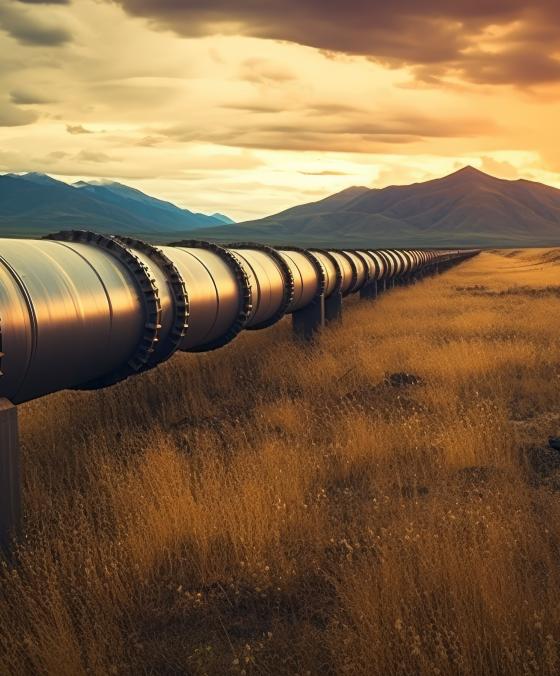Key developments in European gas markets – Q3 2024
2024 Market Monitoring Report
What gas market trends did ACER monitoring find?
The third quarterly review of key developments in gas wholesale markets in 2024 finds that despite supply uncertainty re-emerging, Europe avoided severe gas price volatility. This edition of key developments also focuses on the evolution of gas transmission tariffs and their effects on wholesale prices.
- Gas prices: In Q3 2024, European gas wholesale prices rose but remained slightly lower and considerably less volatile than in the same period last year. Increased Norwegian supply, healthy storage levels, and low demand helped moderate price pressures stemming from a tighter global Liquified Natural Gas (LNG) market, geopolitical instability, and uncertainty around remaining Russian gas transits via Ukraine.
- Price integration: Prices were uniform across most EU gas hubs, though not all. Those markets where gas transported through Germany plays an important supply role experienced divergence as the German storage levy increased.
- Pipeline and LNG supply: EU gas imports decreased year-on-year in Q3, continuing a trend seen throughout 2024. While pipeline supply from Norway increased, this was offset by lower LNG imports, as EU buyers avoided competing for higher priced spot cargoes in an otherwise balanced European gas market.
- Gas demand: Stagnant household demand and a modest increase in industrial demand were outweighed by a reduced call on gas-fired electricity generation, leaving overall EU gas demand slightly lower than in 2023 and well below pre-crisis levels.
- Renewables continue to displace gas generation: Increased renewables’ output limited the opportunities for conventional power plants (gas and coal) to run profitably. This lowered carbon emissions, loosened the EU gas demand-supply balance and reduced instances of gas setting marginal prices in electricity markets.
- Gas storage: The EU-mandated 90% gas storage level was reached several weeks ahead of the 1 November deadline, despite lower year-on-year injections throughout the quarter. The market signal to store gas (i.e., the summer-winter spread) remained positive and consistent but was notably weaker, on average, compared to the previous two filling seasons (i.e., summer of 2023 and 2022).
- Gas transmission tariffs: There have been significant increases in transmission tariffs in recent years in some EU Member States but limited evidence that these increases have led to reduced gas price convergence so far. More tariff increases are expected in the near-term, warranting monitoring of the effects of tariff changes on cross-border trade and market integration. Future tariff levels will depend on demand trends, asset depreciation, and decarbonisation efforts.
What challenges lie ahead?
- The agreement for transportation of Russian gas through Ukraine expires at the end of 2024, and its renewal is unlikely. Landlocked Central European countries will need alternative supply routes, making cross-border trade essential for maintaining affordable gas prices.
- If gas withdrawals this winter significantly exceed those of the past two, EU buyers may need to increase their competitiveness in LNG markets to replenish stocks in 2025, potentially driving up wholesale gas prices. Weather conditions will play a key role in either exposing or mitigating these risks.
- Several LNG production projects are currently under construction, but relief for a tight global LNG market may not be imminent. Facilities expected to deliver the first cargos to the global market in 2025 face uncertainty in commissioning and production ramp-up. Significant additional LNG volumes are anticipated from 2026 onwards, as several large projects are scheduled to come online.
ACER will continue to closely monitor trends in the European gas markets that could lead to short-term volatility for European energy markets. The next update on the European gas wholesale markets will be published early in 2025.
Key developments in European gas markets – Q3 2024

Highlights
Report
The report finds that despite supply uncertainty re-emerging, Europe avoided severe gas price volatility in Q3 2024.
What’s novel in this quarterly edition is the new focus on the evolution of cross-border gas transport tariffs, which have been rising in recent years. While transport costs currently have a relatively small impact on price formation, their influence is expected to grow, affecting how the EU gas market operates in the future.
Additional information
- Access the underlying datasets.
- Explore the previous publications on the topic, covering insights from Q1 & Q2.
